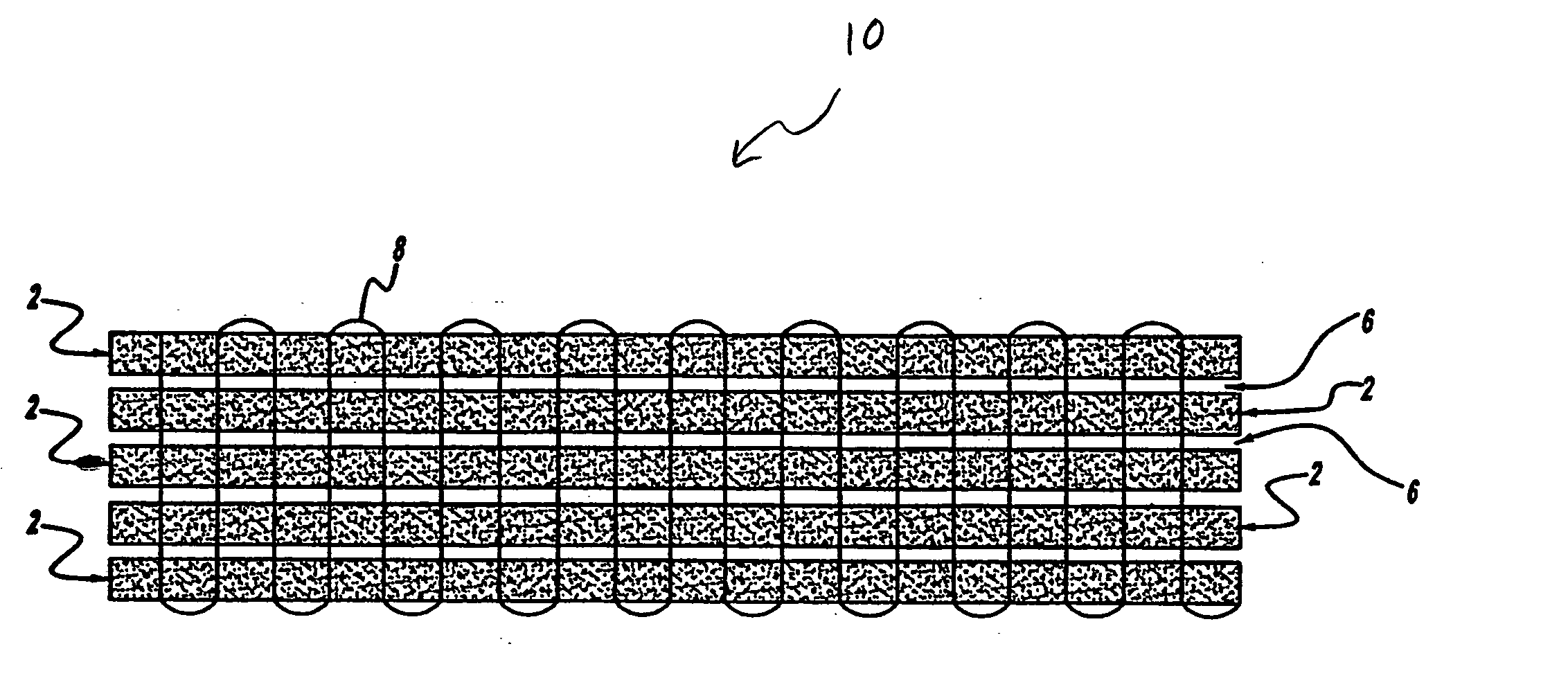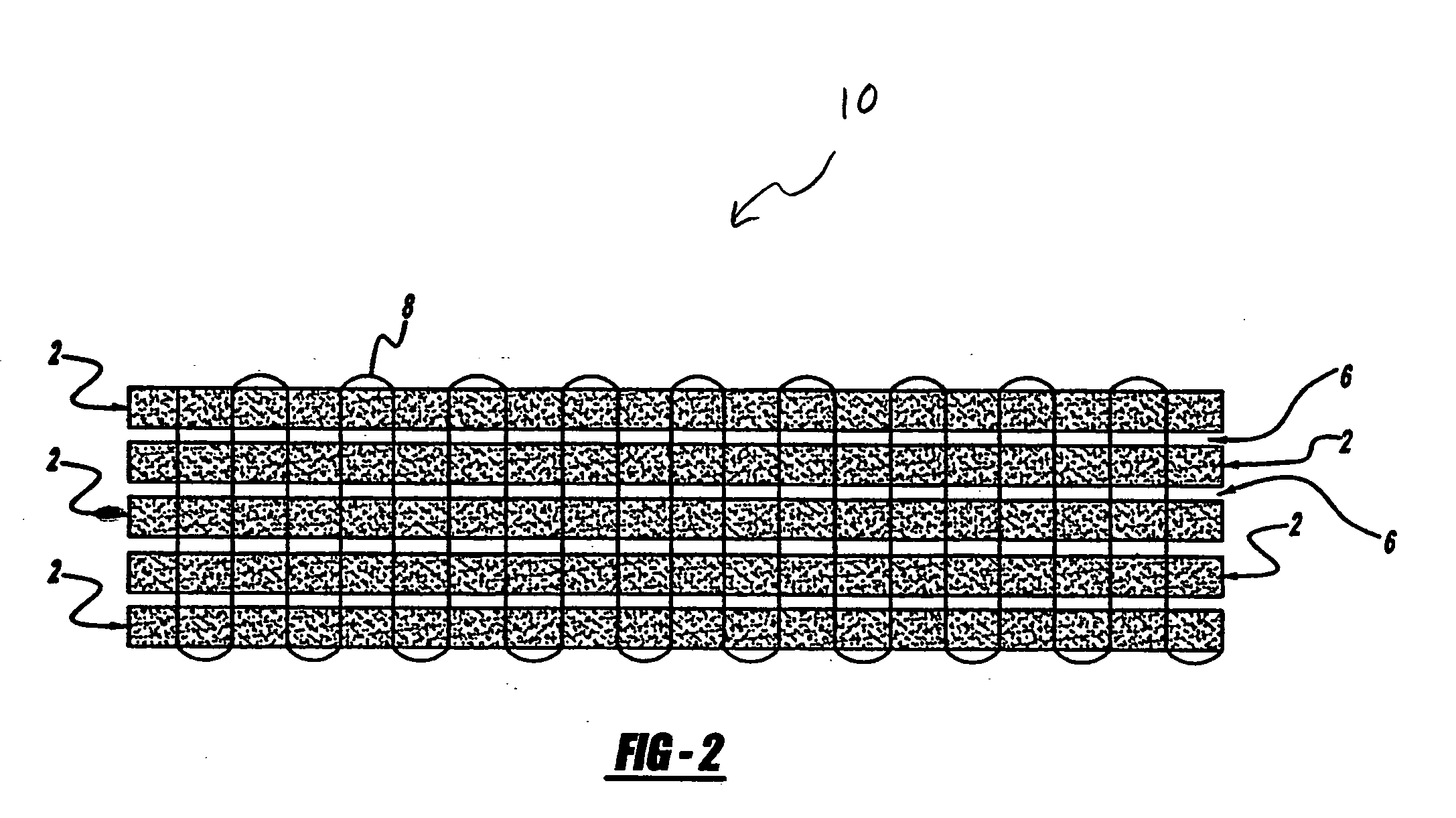Methods and preforms for forming composite members with interlayers formed of nonwoven, continuous materials
a technology of continuous materials and composite members, applied in the field of cure composite materials, can solve the problems of melting-flow viscosity, inability to locate uniformly between the plies, and reduce the mechanical properties of the in-plane, and achieve the effect of increasing the impact resistance of the composite material
- Summary
- Abstract
- Description
- Claims
- Application Information
AI Technical Summary
Benefits of technology
Problems solved by technology
Method used
Image
Examples
examples
[0050] The results shown below are for compression-after-impact (CAI) panels made and tested according to BMS 8-276 (a Boeing material specification for a toughened prepreg system used for commercial aircraft) using BSS 7260 Type II, Class 1 impact with an impact energy of 270 in-lb.
[0051] Test panels were prepared as follows. The panel lay-up was (+45 / 0 / −45 / 90)3S using unidirectional fabric from Anchor Reinforcements (Huntington Beach, Calif.) to which spunbonded fabric had been melt-bonded. A control used only a thermoplastic weft fiber to hold the fabric together. The three spunbonded fabrics were supplied by Spunfab (Cuyahoga Falls, Ohio) in areal weights of 0.125, 0.250, and 0.375 oz / yd2. The three materials used were PE2900, a polyester; VI6010, a ternary polymer blend; and PA1008, a polyamide.
[0052] A dry, uni-directional tape 13-inches in width was prepared by melt-bonding the respective spunbonded fabrics onto a tape containing 190 g / m2 of T700 carbon fibers (Toray, Tokyo...
PUM
| Property | Measurement | Unit |
|---|---|---|
| width | aaaaa | aaaaa |
| diameters | aaaaa | aaaaa |
| diameters | aaaaa | aaaaa |
Abstract
Description
Claims
Application Information
 Login to View More
Login to View More - R&D
- Intellectual Property
- Life Sciences
- Materials
- Tech Scout
- Unparalleled Data Quality
- Higher Quality Content
- 60% Fewer Hallucinations
Browse by: Latest US Patents, China's latest patents, Technical Efficacy Thesaurus, Application Domain, Technology Topic, Popular Technical Reports.
© 2025 PatSnap. All rights reserved.Legal|Privacy policy|Modern Slavery Act Transparency Statement|Sitemap|About US| Contact US: help@patsnap.com



